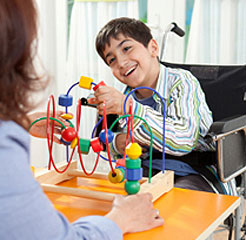Monoplegic Cerebral Palsy
Cerebral palsy is a developmental disorder which has different manifestations. This condition usually manifests itself before, during or after birth affecting different parts of the body, leading to problems with movement, speech and interaction with one’s environment.
Cerebral palsy may be caused by improper birthing techniques, medical malpractice, prenatal infection leading to brain lesion, or any form of traumatic brain injury to the child’s brain.
Monoplegia: A Definition

Monoplegia and Cerebral Palsy
Monoplegia refers to a type of cerebral palsy which only affects one limb. Similar to hemiplegia, this variation of cerebral palsy may not be as obvious as other types. That being said, monoplegia may affect a child in various ways, making it hard for them to reach developmental milestones or live an independent life.
Monoplegia typically affects limbs such as the hands and feet. In the case of the hands, the whole hand and fingers may curl towards the body, making it hard for a child to use this hand or perform tasks which need the use of both hands.
For monoplegia affecting the feet, the Achilles heel tendon and related muscles have increased tone and stiffness causing the child walking on its toes. While toe walking is common in growing children, a child who persists with walking on their tip toes for many weeks and months may have monoplegia, necessitating medical attention.
What You Can Do
Monoplegia usually corresponds to damage to parts of the brain which control body movement. While there is no cure for this condition, there are a few things that you as a parent can do to help rehabilitate the affected limbs.
Physical therapy to help improve muscle tone can go a long way when it comes to recovery. At the same time, fitting the child with a special foot brace may help lower the unnatural arched foot resulting from the condition. In some instances, giving the child a large toy to play with may help exercise hand muscles leading to a better prognosis after a period of time.
